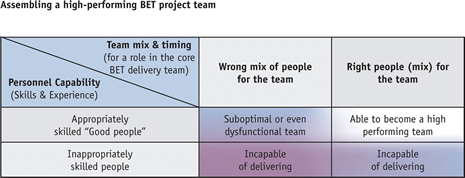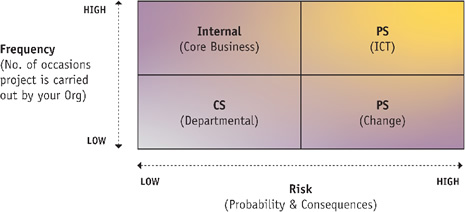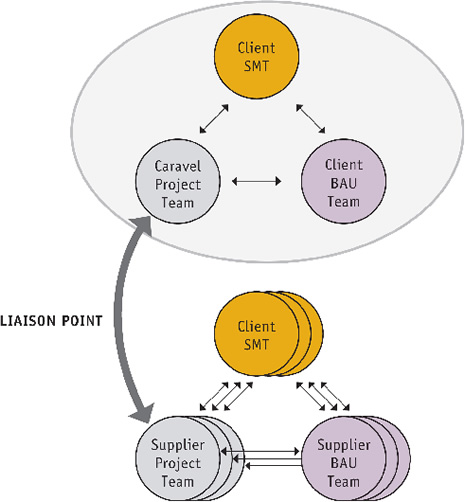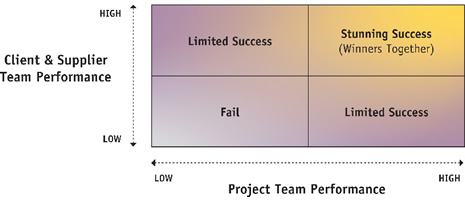Good people vs right people
It has been said before that a project is only as good as its people. And because wrong people are one of the main causes of project failure, logic dictates that people are therefore also part of the solution.
Selecting the right team architecture is an art in itself. It needs to effectively address a variety of key project parameters, such as
- Project type
- Frequency of execution
- Tools
- Methods
- Experience
- Client knowledge transfer etc
The leader and the team may comprise a number of resource variations including internal staff, contract/freelance services and/or professional service providers.

Choosing the right resource approach is vital for the success of your project. The project resource approach will be largely determined by the type of project, its risk profile and the frequency of execution in an organisation. A project with low risks and high execution frequency, for instance, can be well catered for internally. A high risk and low frequency project on the other hand, such as a change project, arguably benefits from specialist service providers.

The type of project, in terms of frequency and risk, determines which resourcing approach is best suited - internal resources, professional service providers (PS) or contract services (CS).
Project team dimensions and interaction
Selecting the right project team assumes even more importance when considering the project team’s connection with the organisation.
After all, the project reality comprises essentially three ‘teams’ who are closely linked to the project through the organisation:
- The senior management team
- The line management team (= business-as-usual team / BAU)
- The project management team
Given the regular interaction between these three groups, the project management team plays a crucial role in effectively liaising with a diverse and large team.
Beyond the organisation, there are multiples of similar team groupings, e.g. in supplier organisations. Their teams liaise with the project management team, adding further demands and pressure on making the right personnel choice.
After all, when placed in context, all those teams must perform for the project to be rewarded with success.

The project management team has to work effectively as part of a wider project team, liaising with the senior management team and line management (business-as-usual). Their management reach extends to supplier organisations with similar team configurations.
The art and science of team formation
Selecting the right people goes beyond educational attributes, skill level and experience. Caravel® is acutely aware of the different dynamics that come to play in a team, and how to assemble a high performing team, as opposed to a dysfunctional and poorly performing team.
Individuals are often equally well suited ‘on paper’ to lead a team. But in reality, the dynamic of the teams and the demands of the project may require a tailored approach; one person may be selected as best suited to start up a team, while another person may be brought on board to change and cement the team culture and execute the project.
They may well be good people.
But they are not necessarily the right people for the team.
The overall team performance of the combined teams – the project team, the client team and the supplier team – enhances the total effect.

The combined performance of all teams creates successful projects.
|